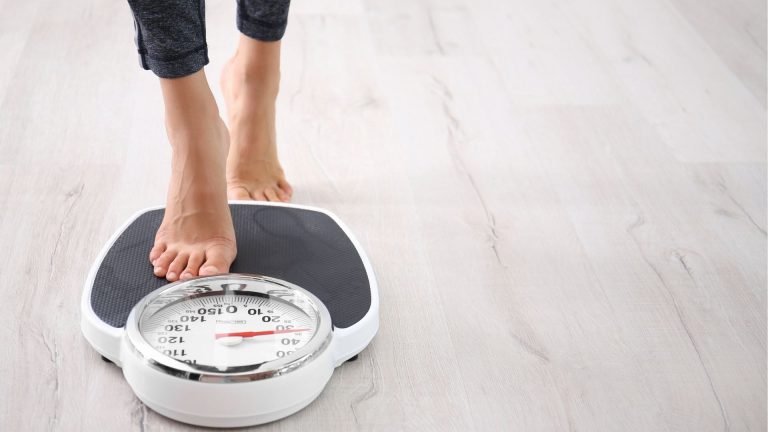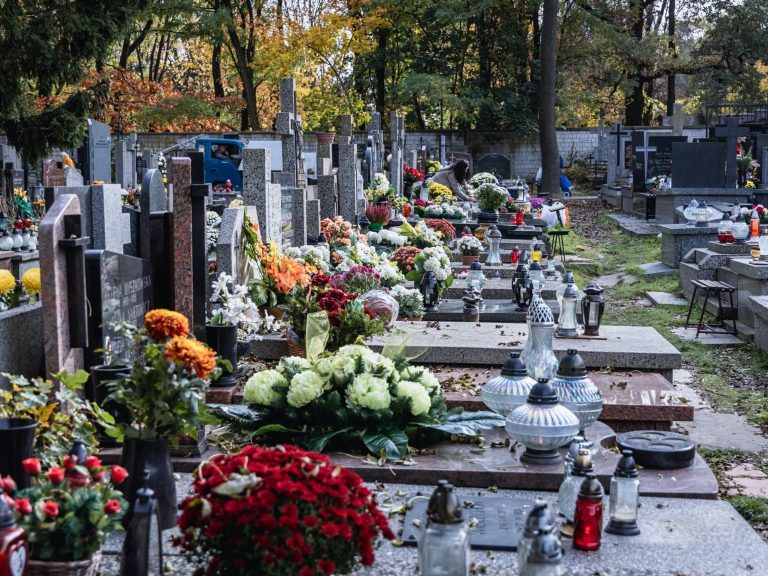Scientists from the Warsaw University of Technology are checking how to protect against hypothermia during surgery

It is here, in a modern operating room, that research is carried out on how to prevent hypothermia in a patient undergoing surgery. If its temperature drops below 36 degrees C, it may cause cardiac and respiratory problems and a greater risk of infections. This is one of three operating rooms in Europe where this type of research is carried out – says Prof. Anna Bogdan from the Faculty of Building Installations, Hydrotechnics and Environmental Engineering of the Warsaw University of Technology.
Katarzyna Pinkosz, Wprost: We still often do not realize how important ventilation and air conditioning, including the right temperature, are in a hospital – not only for the patient's comfort, but also to protect him from nosocomial infections. Meanwhile, in many older hospitals, the only way to ventilate patient rooms is still… opening a window?
Prof. Anna Bogdan: The importance of air conditioning systems in hospitals has been greatly appreciated during the COVID-19 epidemic. Let us remember that ventilation is only about air exchange, while air conditioning is about ventilation and the influence on the air temperature, its speed and humidity, and therefore also on the thermal environment. In some cases, the thermal environment can worsen the patient's recovery process. Unfortunately, many older hospitals do not have air conditioning systems and ventilation involves opening a window. Standard patient rooms have large windows; on the one hand, it is good because it has a positive effect on the psyche, but on the other hand, a lot of heat enters through such a large window, which is not dissipated from the room in any way and causes the patients to feel hot.
Today, we have increasing technological possibilities to install modern air conditioning and ventilation methods, but when the building is old, pre-war, large funds are needed to adapt the facility and install devices or installations that ensure appropriate internal environmental conditions.
It is hot in the rooms in the summer and, in fact, in the winter as well, because the radiators heat up, which also causes the air to be very dry.
Increasing awareness of the importance of purified air and proper thermal conditions is important both for people who manage hospitals and for people who donate funds to hospitals. It is known that the first priority is to provide treatment, salaries for staff, pay for utilities, etc., and only then do we wonder whether there will be money for renovations. When I conducted research on this topic in hospitals, I found that the technical staff was perfectly aware of what optimal ventilation and air conditioning methods should look like.
The problem, however, is that the provisions of the regulations regarding conditions in hospitals are very general and basically every hospital meets them. However, knowledge about the impact of indoor air parameters is increasing, which was especially noticed during the pandemic.
Many serious infections occur in hospitals…
Unfortunately, there were many cases where patients became infected with COVID-19 in hospitals because there were many patients with varying degrees of infection in one room, and it was not possible to separate them sufficiently or to use additional protective technical solutions. Of course, the situation is completely different in ICU rooms and operating rooms – very good ventilation and air-conditioning systems must be installed there.
However, we know that in the case of standard patient rooms, we can also use certain solutions that protect against infections, e.g. we could install a type of “exhaust hood” above each patient – similar to what we have in the kitchen.
Are there already such possibilities?
Of course; a special air vent can be installed above each patient – there are systems that can create such a “curtain” around the patient's bed so that the air he exhales does not flow to another patient, and also protect him against the inflow of pollutants from other parts of the room.
Why then are they used so rarely?
These types of devices in regular patient rooms are more than minimal requirements. First of all, the hospital director must be aware that such systems should be installed and have an appropriate budget for it.
It also happens that at the stage of designing new spaces, the designer receives information that there will be two beds in a given room; over each of them he designs a system to protect the patient. And then in practice it turns out that there must be more patients in a given room. Even if it can be done technically, it may turn out that the “curtains” are no longer above the patient, but next to them, which may make the situation even worse.
But there are hospitals where such systems are already installed.
This is what happens in newly built hospitals. It's worse in the older ones; they often ask me for consultation because they are approached by companies offering various types of systems or devices to be installed in existing facilities. Unfortunately, this doesn't always make sense. Example: in the operating room we should have a cascade of air-purifying filters – first a pre-filter, then another filter, and finally, before the air inlet, a filter with the highest efficiency, e.g. HEPA, because the air reaching the operating field must be really clean. The company wants to provide a device that is supposed to filter the air, but it does not even have the appropriate filters installed, or the efficiency of the device is not adjusted to the volume of the room. It also happens that manufacturers show that in laboratory conditions a given device is great at cleaning the air from bacteria, but they do not have such data from real operating rooms proving that a specific device really works. Laboratory conditions are completely different from what they are in reality. Therefore, before choosing a given device or system, it is worth carefully analyzing all available technical data and test results confirming effectiveness to be sure that this particular solution will fulfill its purpose.
Special conditions must prevail in the operating room: unintentional hypothermia often occurs during surgery, the temperature drops below 36 degrees C, which causes, among other things, higher risk of infection, poorer wound healing, but also cardiac and respiratory problems. Your team is also researching solutions to prevent this from happening. How to prevent hypothermia during surgery?
This is not easy. Hypothermia during surgery occurs for several reasons. On the one hand, the reason is anesthesia, during which the natural mechanisms of human thermoregulation are weakened, so the body temperature decreases; but also the reason is the need to not eat food for many hours before the procedure. On the other hand, there are medical staff in the room – these people work in appropriate protective clothing, including aprons impermeable to air, fluids, etc. As a result, they feel hot, sometimes they even say that sweat flows into their shoes, which is why they want the room temperature was slightly lower. And the patient is often in a thin T-shirt, a large surgical field is exposed, he lies in the air blowing from the air conditioning system, because the surroundings of the operating field must be appropriately clean.
There are patient warming systems available on the market, but their effectiveness varies. Historically, in the beginning, the patient was simply covered warmly, but it turned out that this was not enough. The patient has too little heat inside to maintain it. There are special systems, e.g. a heated mattress is placed on the operating bed, and special heated “drapes” are also used for the patient. There are many such systems that help prevent lower body temperature. However, they also have “minuses” when it comes to air purity. You can imagine it this way: when we heat a patient, the warm air rises and a convection stream is created above the patient.
A “cushion of warm air” is created, and on the other side (from the ceiling) we have a ventilation system from which clean air reaches the surgical field. There are already studies showing that the use of heating systems disrupts the flow of clean air. However, we do not yet know whether this affects the risk of surgical site infection.
So it is not known whether installing patient heating systems actually helps or harms?
It certainly helps by protecting the patient from hypothermia. However, we do not know whether the consequences of increasing the risk of failure to keep the air clean in the surgical field are more serious for the patient than the risk of hypothermia.
It is not yet known how to prevent an air pocket from forming?
We are analyzing it. Our team at the University of Technology conducted a research project involving heating the patient by radiation (using radiators). We hope that this heat cushion will then be smaller. We carried out preliminary research and there were also discussions about where such a radiator could be placed in the operating room to heat only the patient, not, for example, medical staff, and so that it would not interfere during the operation. It turned out that it could only stand on the side of the patient's head or legs. Another thing – the system would have to be cheap to be widely used. It is also necessary to determine what its power should be, e.g. to warm the patient but not burn him.
Of course; on our projects, we cooperate with doctors and epidemiologists dealing with hospital infections.
Recently, at the Faculty of Building Installations, Hydrotechnics and Environmental Engineering of the Warsaw University of Technology, where you work and conduct research, there is a very modern operating room. Is this where research will be carried out on the impact of ventilation and air conditioning systems on the patient's temperature?
Yes, we managed to create such a room and – thanks to grants and cooperation with industry companies – equip it in such a way that it perfectly imitates the conditions in a modern operating room. Basically, the only difference is that its dimensions are smaller than those of a typical hospital operating room. Our experimental room is one of three in Europe where this type of research can be conducted. We have air supply systems used in hospital operating rooms, thermal mannequins pretending to be staff (they give off as much heat as a human). The room meets all requirements regarding cleanliness and tightness.
We run, among others: research related to the risk of hypothermia in patients using the two most common air conditioning systems currently used in operating rooms. The research is conducted with human participants; we currently have 50 volunteers because we wanted the research group to be relatively large.
Are these healthy people?
Yes, these are healthy people, we do not give them perioperative anesthesia – we found that it would involve too much risk. The test involves first exposing them to one of the air conditioning systems. We check body temperature, internal temperature (using special disposable capsules), heart rate, and assess the risk of hypothermia. Then, in the second room, patients warm up and then are exposed to the second air conditioning system. On this project, we cooperate with the State Medical Institute of the Ministry of Internal Affairs and Administration, the Institute of Experimental Medicine of the Polish Academy of Sciences, as well as other doctors and specialists who make up the Advisory Board of our team. The research is not finished yet, but we can already see that there is a difference between these systems when it comes to the occurrence of hypothermia. We hope that our research will contribute to answering the question of how to effectively prevent it while protecting the patient against infection.
Ph.D. engineer Anna Bogdan – professor at Warsaw University of Technology, vice-dean for general affairs and science at the Faculty of Building Installations, Hydrotechnics and Environmental Engineering at the Warsaw University of Technology. President of the Polish Association of Sanitary Engineers and Technicians (in the 2020-2024 term), Polish delegate in the Federation of European Heating, Ventilation and Air Conditioning Associations (REHVA).






